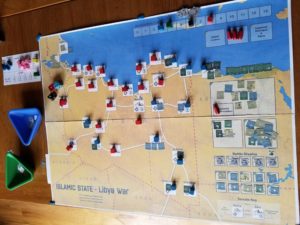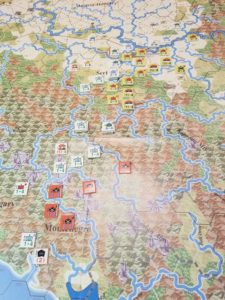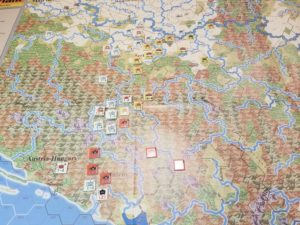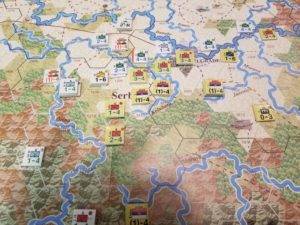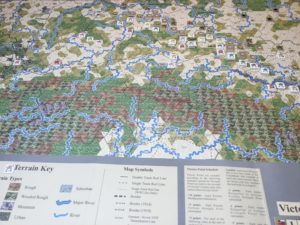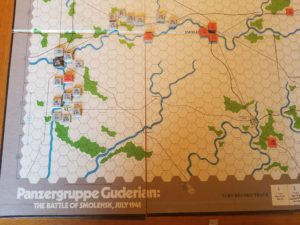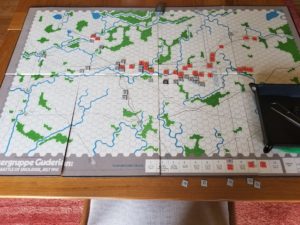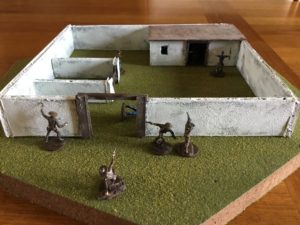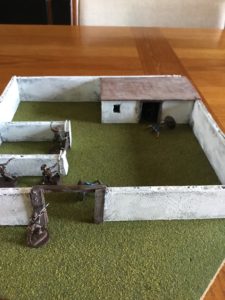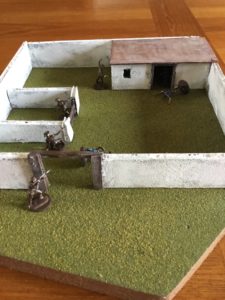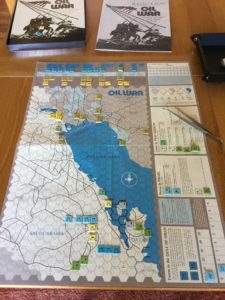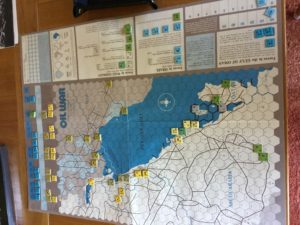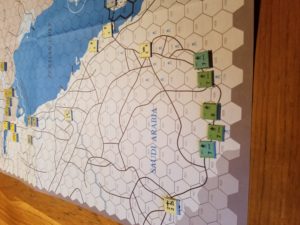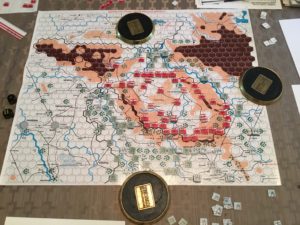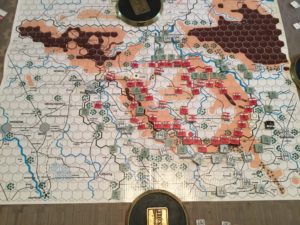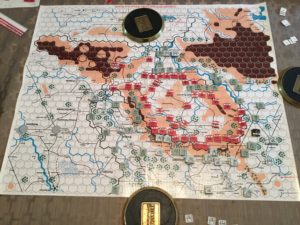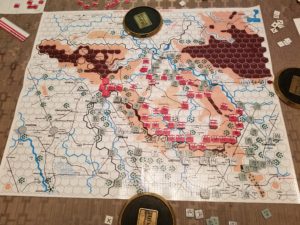Had a nice visit with Tim the other weekend. We set up the South Pacific scenario for Empire Of The Sun. This scenario is included in the latest edition, and also published separately in C3i Magazine.
We played the Plan Orange variant, also published in C3i, a few months ago. Plan Orange posits an early 1930’s conflict and focuses on surface combat, with very limited air assets. It’s a great way to “lean into” the system and did whet our appetite for more. Good marketing. There’s also a Burma variant, which just doesn’t appeal to me (as one BGG Comment contributor put it “just play the 1943 scenario on the big map” .
The South Pacific scenario has its own small map, relatively low counter density and limited scope. It’s perfect for a fun weekend and our proclivity for multiple resets.
And reset we did. Were able to get three “games” in, none played to conclusion, due to rules and/or strategy miscues. It’s always a learning experience. In fact, our we did our first attempt “by the numbers” reading through each step using the Play Aids.
There are plenty of reviews out there, so I’ll focus on my personal lessons learned (that I can remember).
- Read And Understand The Damn Cards: Lots of information to digest and implement.
- Airfields Are Really Important: Should be obvious, especially if one has read about the Bismarks Campaign. They are focal points for operations, and extremely valuable for staging air assets to a Battle Hex. Fundamental but sometimes forgotten.
- Understand The Sequence Of Assigning “Hits”: Escort your carriers with plenty of surface vessels as they will absorb most, if not all, of the damage inflicted.
- Remember You Can Attrit Ground Units With Only Air Power: You can’t kill them, but air attacks (CV or Land-Based) can flip them to the reduced side. A possible strategy before an amphibious assault.
- Be Cool With the Air Naval Combat Results Table: Shown at the upper right hand corner of the link. This is my least favorite part of the game. So….you meticulously craft your offensive, are mindful of terrain etc and have the odds you want, but then have to roll on this bastard. Roll a “One” and Blammo!, now at 50 percent strength. Ugh!!!
- Remember Inter-service Rivalries: A big part of the game. Both sides can rarely use both naval and army assets in the same offensive.
Back to Item 5. I think I understand the rationale. Take Midway (please). Only a fraction of the US naval air even found the Japanese fleet. And, when they did, the attacks were uncoordinated. So, a reduction in combat effectiveness due to the unforeseen is not unreasonable at all.
Tim and I were so fired-up we’ve decided to play on Vassal. I’ve started that process and……it’s a process.
